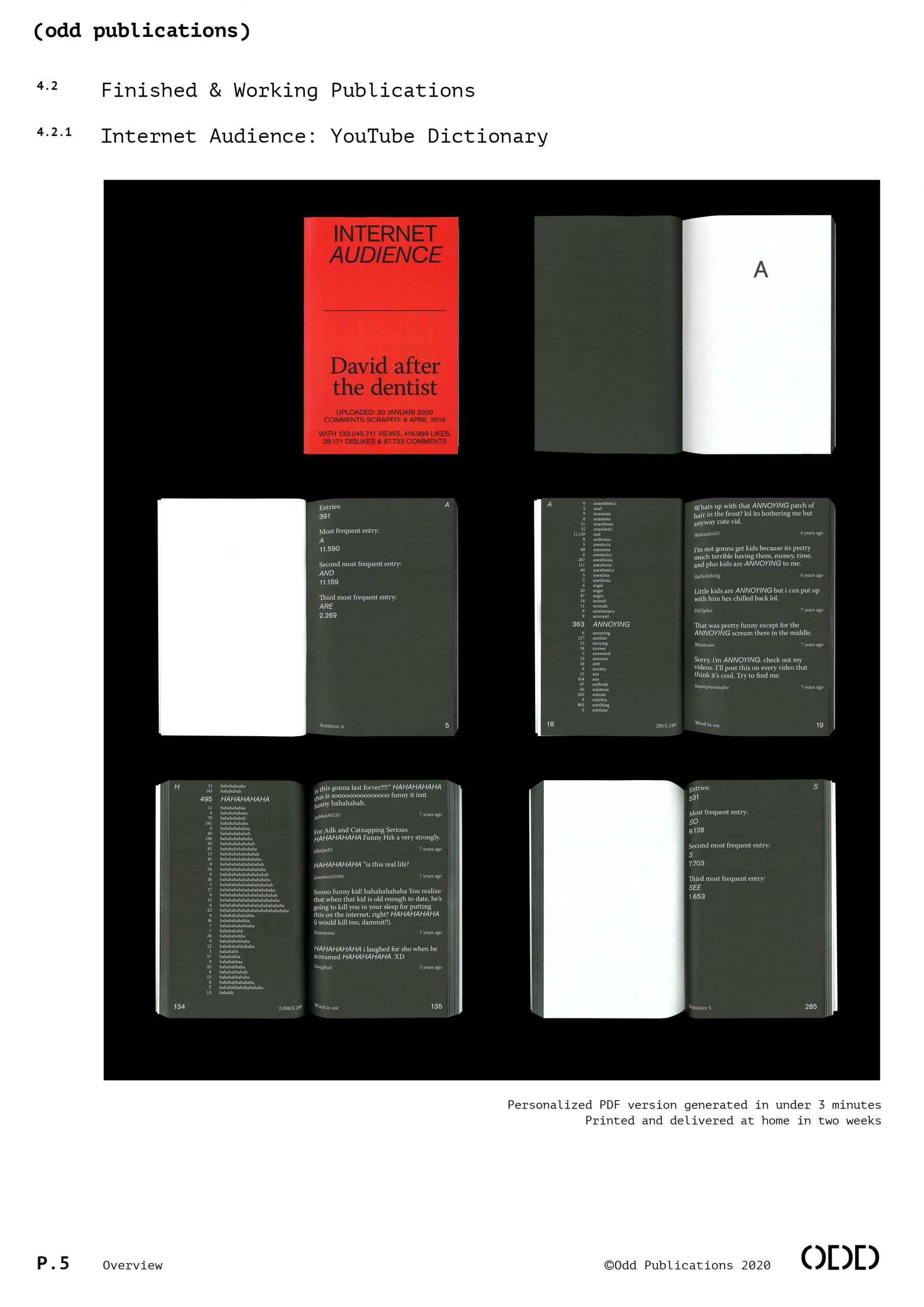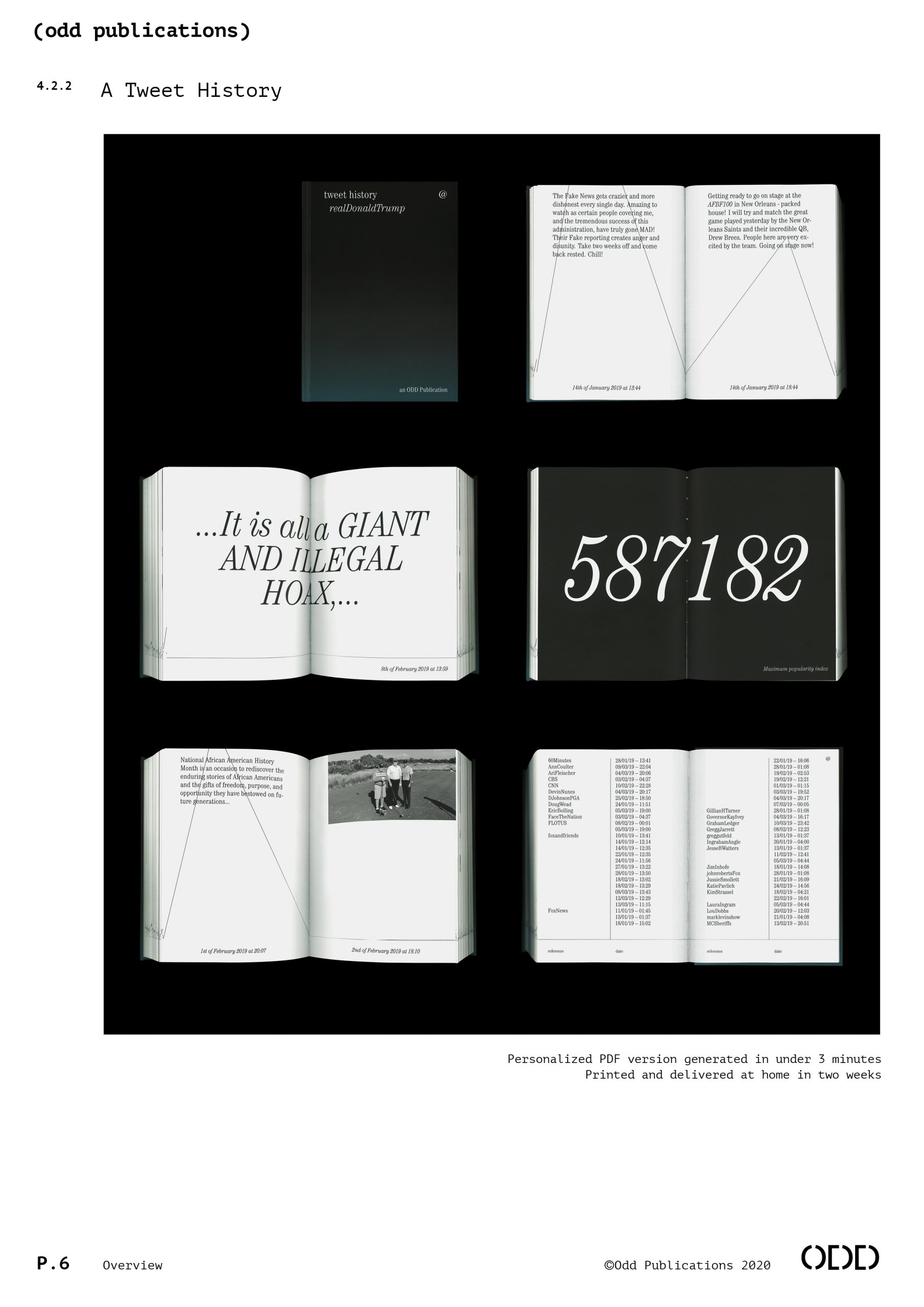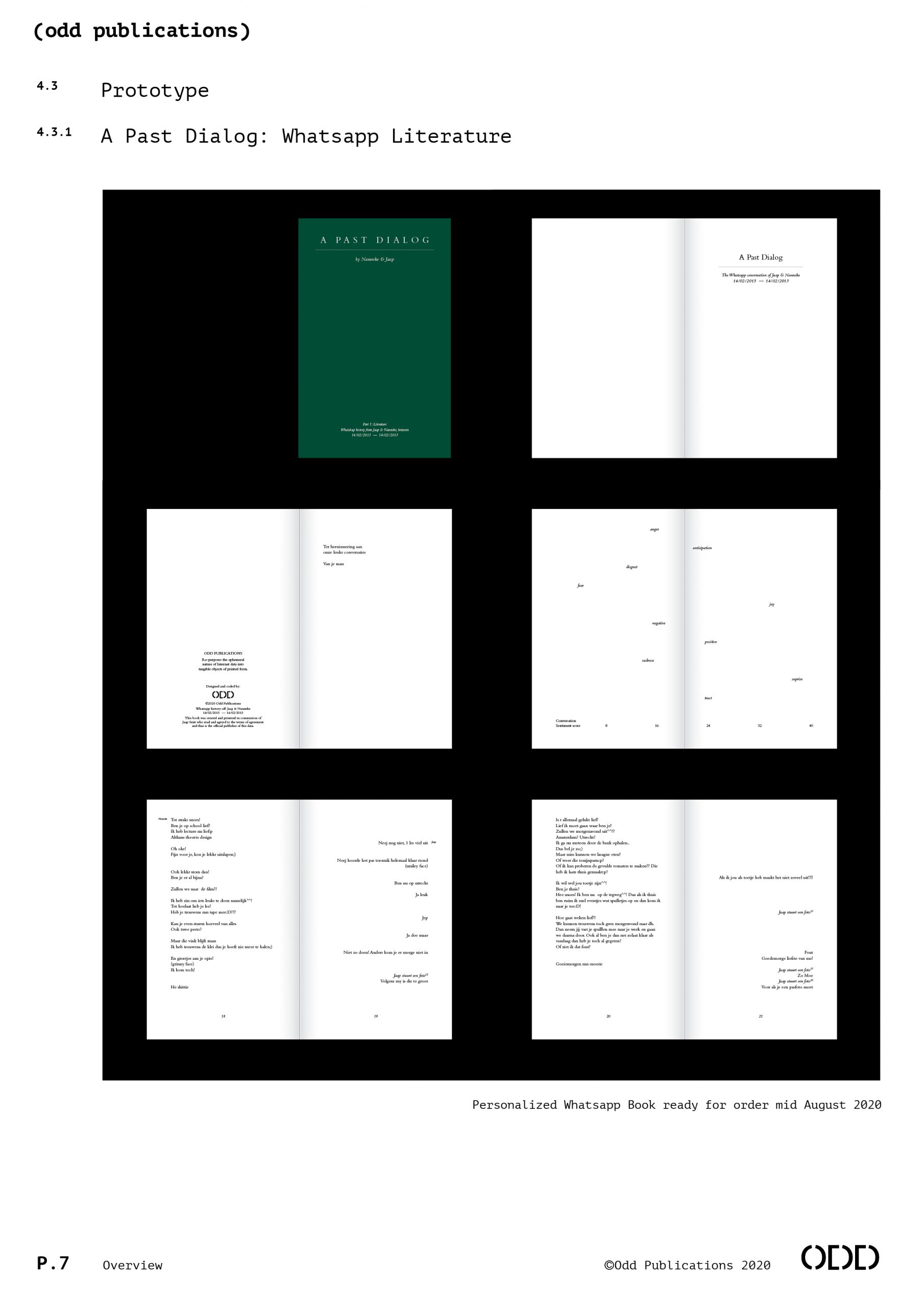Unusual Readings

Useful information
- Team members
- Darien Brito Jaap Smit
- Country
- Netherlands
- Keywords
- Odd Publications Publishing house Book Print on Demand Social Media
Short Description
To re-purposes the ephemeral nature of Internet data into tangible objects of printed form.
Detailed Description
We have initiated a series of projects that use data from various Internet platforms for the automatic generation of books. These seek to re-evaluate our relationship with digital information and to re-purpose online content into analog forms. We offer a novel form of literature and different modes of reading the internet. Our methodology is to construct new meanings and narratives via generative design applied to books. We use algorithms for extracting information and exploring aspects of graphic design and typesetting that otherwise would not be attainable. Our initiative is based on the print-on-demand phenomena, which originated with the idea of offering single-printed, personalized books. We are interested in creating literary forms on demand, based on the online content of a user. We do this by accessing their online persona’s and gathering data for the creation of literary collections of different sorts.
Project Details
- Does your design take social and cultural challenges and human wellbeing into consideration?
Our idea is centered around current trends in social media and how we as a society use and abuse these platforms. As pilot projects, we have produced software that gathers content from any online account of either the YouTube, Twitter or Whatsapp platforms and automatically creates a book, which is representative of the user’s opinions, reactions and posted content, over specific periods of time. We produce as well with the book a number of statistics and perform various forms of data analysis, so that users discover and are confronted with perhaps unexpected properties and patterns in their online personas.
- Does your design support sustainable production, embodying circular or regenerative design practices?
The print on demand service is an industry that is developing in big steps. Probook, the company we work with, is a strong believer in sustainability. Naturally, printing data meant for the online world in hundreds of pages can be seen as waste, but it is apparent to us that given the fragility of the book and the physical limitations of printing, the project can highlight aspects of other urgent forms of waste, by linking a material product to an intangible one.
Just because we cannot touch data that does not mean that it exists in the ether. Everything we say, write and publish online gets stored in huge complexes of data servers, which take physical space and energy. Our intention is to gain insights on the nature of information and try to actualize the problems that come with ever growing digital content. From data privacy to energy waste. This is why it is so important that we learn how to deal responsibly with this unique situation, where we are all connected by the world wide web.
- Does your design promote awareness of responsible design and consumption?
Our project is a form of critique to the popular notion that the book is dead; We comment as well on the sheer amount of information produced every second, which yields shielded and unknown behind the fugacity of a webpage. We believe that, by shifting the context of a tweet, an emoji, a post, a message, or a comment, we can gain insight into our rapidly changing online culture and interaction, as well as revealing ways on which the printed form can be further explored. We explore the consequences of printing and preserving opinions, which are ephemeral by nature, and play with the irony of creating books that quickly become obsolete, given the exponential speed on which online content is generated every day. Perhaps the most valuable lesson that we learned while doing this projects is that there are ways to repurpose online information so that our attention gets increased, as our accountability. Simply shifting the context on which data is accessed can change the way we read and think.
Images


